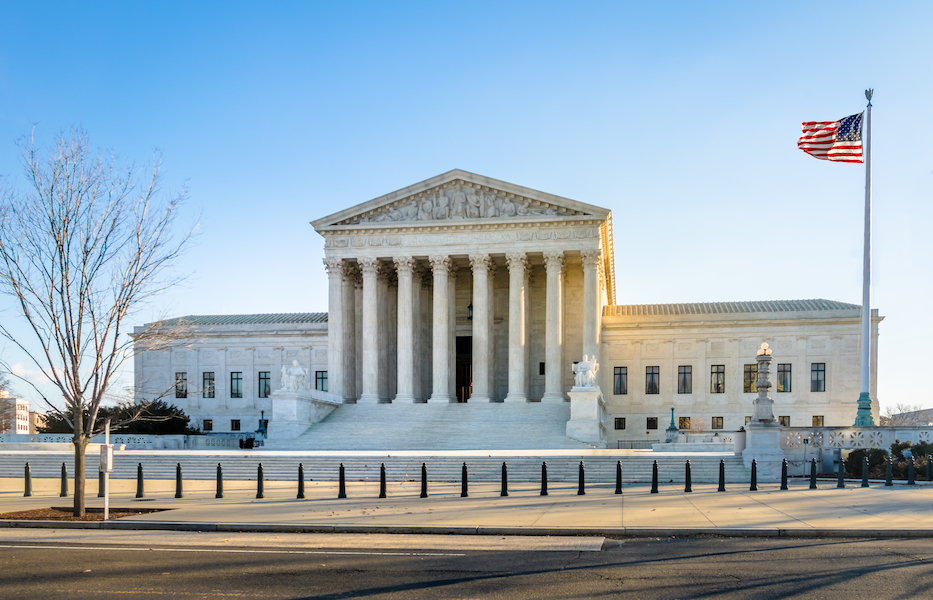SCOTUS Sides with Tennessee in Groundwater Dispute

In Mississippi v. Tennessee, 595 U. S. ____ (2021), the U.S. Supreme Court held that that the waters of the Middle Claiborne Aquifer are subject to the judicial remedy of equitable apportionment. The Court’s decision, which is the latest ruling in a long-running ground water dispute between the two states, was unanimous.
Facts of the Case
Mississippi brought an original action against Tennessee for damages and other relief related to the pumping of groundwater by the City of Memphis from the Middle Claiborne Aquifer, a valuable water resource that lies beneath eight States. Mississippi argues that Tennessee’s pumping—using wells Mississippi concedes are located entirely in Tennessee—siphons water away from Mississippi and amounts to a tortious taking of groundwater owned by Mississippi.
Mississippi expressly disclaims any equitable apportionment remedy, arguing that the fundamental premise of the Supreme Court’s equitable apportionment jurisprudence—that each of the opposing States has an equality of right to use the waters at issue—does not apply to the dispute. The Special Master appointed by the Supreme Court to assess Mississippi’s claims determined that the aquifer is an interstate water resource and that equitable apportionment is the exclusive judicial remedy.
Because Mississippi’s complaint did not seek equitable apportionment, the Special Master recommended that the Court dismiss the complaint but grant Mississippi leave to amend. Mississippi challenged the recommendation to dismiss. Meanwhile, Tennessee objected to the recommendation to grant Mississippi leave to file an amended complaint.
Supreme Court’s Decision
The Supreme Court dismissed Mississippi’s complaint without leave to amend. “[W]e hold that the waters of the Middle Claiborne Aquifer are subject to the judicial remedy of equitable apportionment,” Chief Justice John Roberts wrote.
As the Court explained, the doctrine of equitable apportionment aims to produce a fair allocation of a shared water resource between two or more States, based on the principle that States have an equal right to reasonable use of shared water resources. While the Court has applied the doctrine to interstate rivers and streams, disputes over interstate river basins, and in situations where the pumping of groundwater has affected the flow of interstate surface waters, it had not previously addressed whether equitable apportionment applies to interstate aquifers.
The Court ultimately concluded that equitable apportionment of the Middle Claiborne Aquifer is “sufficiently similar” to past applications of the doctrine to warrant the same
treatment. In support, the Court cited that it has applied equitable apportionment when transboundary water resources were at issue. Additionally, Middle Claiborne Aquifer contains water that flows naturally between the States, which was true in the Court’s prior equitable apportionment cases.
In response to Mississippi’s argument that the natural transboundary flow of the Middle Claiborne Aquifer is slower than some streams and rivers, the Court noted that it has applied equitable apportionment even to streams that run dry from time to time, highlighting that the speed of the flow does not place the aquifer beyond equitable apportionment. Finally, the Court emphasized that actions taken in Tennessee to pump water from the aquifer clearly have effects on the portion of the aquifer that underlies Mississippi. Tennessee’s pumping has contributed to a cone of depression that extends miles into northern Mississippi, and Mississippi itself contends that this cone of depression has reduced groundwater storage and pressure in northern Mississippi. According to the Court, such interstate effects are a “hallmark” of the Court’s equitable apportionment cases.
The Supreme Court went on to reject Mississippi’s contention that it has a sovereign ownership right to all water beneath its surface that precludes application of equitable apportionment. As the Chief Justice explained, the Court has “consistently denied” the proposition that a State may exercise exclusive ownership or control of interstate “waters flowing within her boundaries.” Although the Court’s past equitable apportionment cases have generally concerned streams and rivers, the Court found that there was no basis for a different result.
Previous Articles
SCOTUS Wraps Up Oral Arguments for the Term
by DONALD SCARINCI on May 17, 2022
The U.S. Supreme Court has concluded its oral arguments for the October 2021 Term. The justices hea...
SCOTUS Rules Censure of Elected Board Member Didn’t Violate First Amendment
by DONALD SCARINCI on May 10, 2022
In Houston Community College System v. Wilson, 595 U.S. ____ (2022), the U.S. Supreme Court held th...
Supreme Court Breach Is Not the First Involving Roe v. Wade
by DONALD SCARINCI on
The recent disclosure of Justice Samuel Alito’s decision purporting to overturn Roe v. Wade is ar...
The Amendments
-
Amendment1
- Establishment ClauseFree Exercise Clause
- Freedom of Speech
- Freedoms of Press
- Freedom of Assembly, and Petitition
-
Amendment2
- The Right to Bear Arms
-
Amendment4
- Unreasonable Searches and Seizures
-
Amendment5
- Due Process
- Eminent Domain
- Rights of Criminal Defendants
Preamble to the Bill of Rights
Congress of the United States begun and held at the City of New-York, on Wednesday the fourth of March, one thousand seven hundred and eighty nine.
THE Conventions of a number of the States, having at the time of their adopting the Constitution, expressed a desire, in order to prevent misconstruction or abuse of its powers, that further declaratory and restrictive clauses should be added: And as extending the ground of public confidence in the Government, will best ensure the beneficent ends of its institution.




